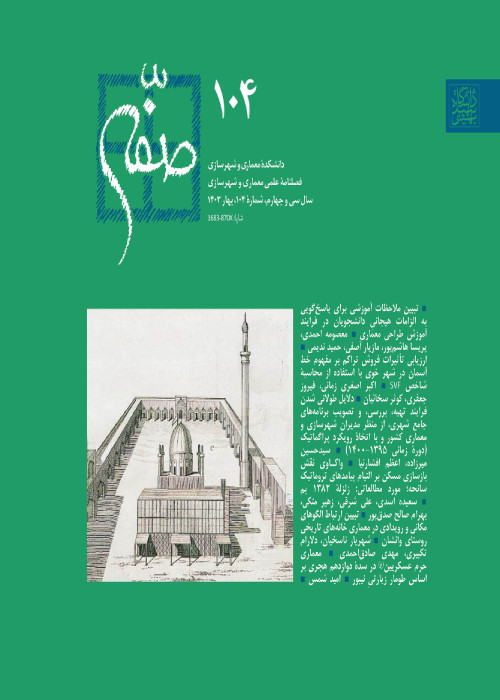Design Principles of the Middle Area for Kids’ Motivation to Play
All psychologists of child development believe that the main core of developmental theories is interaction of an individual with the environment. Based on the empirical studies of children’s outdoor activities, the environment affects the child behavior; so that by changing the environment, the child behavior will change. Today, the population growth of cities on the one hand, and rising land prices on the other, has created overcrowded residential environments. Living in such environments has had a negative impact on the individual and social health of residents. Children, as the most vulnerable group of society, are at greater risk of being exposed to changes in physical and social environments than other groups. In recent years, due to urbanization problems, life style and building density, the middle area in residential complex is an important space where kids can spend most of their time after school, for leisure and social interaction Since these places are dedicated to the important part of the daily lives of children, so improving their quality can be effective on their overall development. Accordingly, in the present study, designing the middle area of a residential complex as a childlike environment and responsive to the kids play needs (3-6 years old) and consequently affecting their social development has the great importance. Based on the literature review, it can be stated that children tend to physical environment in order to satisfy the play need as a factor of intrinsic motivation. So, they gradually start to make changes to it. Furthermore, the physical environmental stimuli, as a factor of extrinsic motivation, play an important role in kids’ motivation to free play. The result is creating environmental affordances which can be entitled environmental affordances to motivate kids to play, regarding to the theory of affordances. The purpose of environmental affordances to motivate kids to play as the potential affordances or the functional affordances is to make the environment usable for children’s play behavior (autotelic or free play), in a way they have freedom to act in accordance with the goals and motivational resources as well as to interact with the environment. More precisely, quality of the elements and physical components of the environment as the extrinsic motivation factor encourage kids to play. So their motivation to free play will increase in physical environment. The final result is the transformation of the physical environment into a playful environment for kids. Therefore, it is possible to determine the design principles of the middle area in residential complex in such a way that by increasing the kid’s sensory stimulations and social interaction, his or her motivation to play can be increased. In the present research, based on the combination of theories related to the research subject, a mixed method research (Qualitative & Quantitative) was used. Accordingly, the theoretical framework of the research has been developed with a qualitative method and aimed at searching for skeletal-functional and cognitive-behavioral features effective on creating and enhancing kids’ motivation to play. On the other hand, the extent and quality of the impact of each component have been resulted in the transforming of quantitative data into quantitative data. This research has been conducted in three main stages: the first stage (hypothesis formulation) by logical argumentation method, the second stage (hypothesis testing) survey based on Delphi method and the third stage (results validation) by simulation method. In this way, after the sample selection and data collection by means of open form questionnaire and closed form, important factors affecting on kids’ motivation to play were extracted by using factor analysis. These factors were: controllability, child-centered legibility, natural stimulant factors, social interactions (generational- intergenerational), vitality of environment, and also sensory stimulation. Then, based on the correlation between the factors, a linear model was designed. The model was modified by path analysis method while investigating the factors’ relationship and degree of influence on each other. In the following, based on the present model, research literature and the result of open-ended questionnaire, the research hypotheses were analyzed and interpreted. Findings showed that "vitality of environment" and "natural stimulant factors" had a positive and significant effect on "sensory stimulation". The impact of "natural stimulant factors", "vitality of environment", "child-centered legibility" and "controllability" in the middle area of the residential complex has also a positive and significant effect on children's "social interactions (generational- Intergenerational)". After guaranteeing the research hypotheses validity, the design principles of the middle area in residential complex were extracted. In the final stage, these design principles were transformed into comprehensible images for kids, and then put to the test of 3-6 years old kids living in residential complexes. Finally, the design principles confirmed by kids, will be considered as the design principles of the middle area in residential complex which consequently promote Iranian kids’ motivation to play.
- حق عضویت دریافتی صرف حمایت از نشریات عضو و نگهداری، تکمیل و توسعه مگیران میشود.
- پرداخت حق اشتراک و دانلود مقالات اجازه بازنشر آن در سایر رسانههای چاپی و دیجیتال را به کاربر نمیدهد.


